Are you looking for a contractor?
Submit our quick form and get quotes now!
Table of Contents
6 min read
How to Prevent Ice Formations on Your Roof


6 min read
How to Prevent Ice Formations on Your Roof
RoofHow to Prevent Ice Formations on Your Roof
Winter may have been a distant memory, but not anymore. As we move our way into the colder part of the year, it’s crucial to be prepared and this includes on the homefront. When it comes to your house's interior, preparing for the cold will involve correctly insulating, sealing doors and windows, applying weather-stripping and so on.
But what about the exterior of your home? Is it impacted by these weather-proofing methods? Well, let’s consider the ice outside, how it affects the façade and more specifically, your roof.
Think back to last winter, did icicles form on your eavestroughs and gutters? If you recall yes, these could point to a greater issue: ice dams. Ice dams are large chunks of ice which form on your roof but have detrimental effects when they melt. Curious about these formations and how to prevent them? Keep reading as we’ve got all the important details below.
Ice dams on your roof
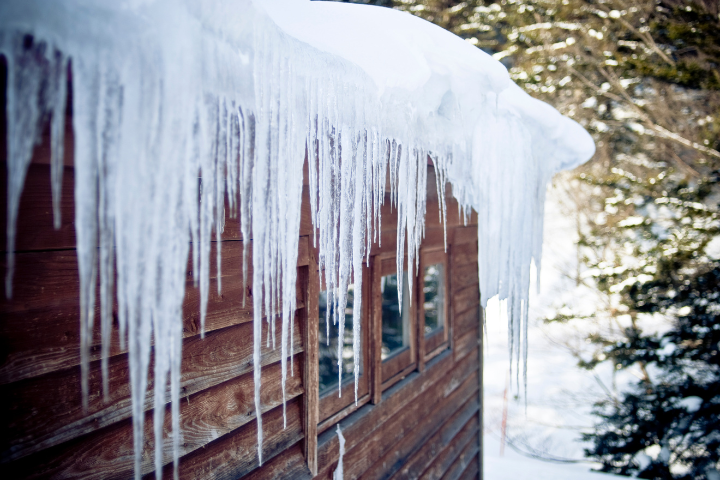
Source: Canva
As we mentioned in our introduction, an ice dam is ice that has collected on your roof and formed a ridge around its perimeter. As snow continues to collect, the ice dam prevents it from moving. With nowhere to go, as the snow melts it may begin to leak through your roof's surface and into the home. This can cause significant damage to all in its path including walls, ceilings, insulation and even furniture and floors.
So, how exactly is an ice dam formed? Well, it actually comes down to the interior of your home and how it interacts with the buildup of snow on your roof. Two things need to be present for an ice dam to form, and these are a build-up of snow and a roof that reaches temperatures above freezing. Essentially, a good amount of snow on the roof combined with a discrepancy between outdoor temperatures and the temperature of the surface of your roof.
If your roof exhibits “hot spots” or places which have a warmer temperature than others, the snow on top of those spots will melt quicker than snow in other areas. This melted snow will seep down to areas where solid snow sits.
The originally melted snow will freeze again, and thus we have the creation of an ice dam. The ice dam will only continue to grow as the snow melts in these hot spots and re-freezes. As water collects on your roof, it can find its way into the smallest of cracks and groove or compromises in the material of the surface. If you have an attic, this water will find its way indoors.
How heat finds its way to your roof
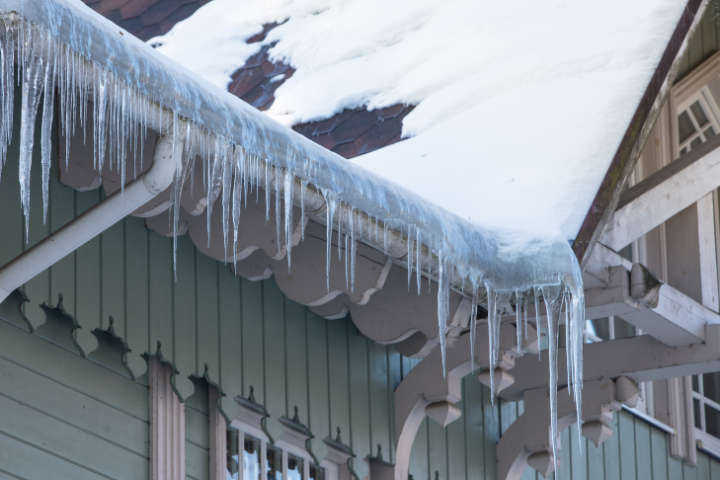
Source: Canva
As mentioned, the interior temperatures of your home directly reflect the temperature of your roof. Heat from your house travels up to the roof in three specific ways, and these are conduction, convection, and radiation. Conduction is the process of heat travelling through a solid. Rising air around your home carries heat, and this heat is transferred by the process of convection.
Lastly, heat can be transferred to spaces and surfaces by electromagnetic waves and this process is called radiation. In most homes, heat finds its way to your ceiling by conduction, moving between any open spaces in your home's insulation.
Once the heat has arrived between insulation and ceiling, it warms the top layer of the insulation and carries it towards the roof by convection. The heat is then transferred outward by radiation. As you likely guessed, this three-step process is what leads to the creation of ice dams. There are a few key measures that you can take in order to prevent ice dams from forming on your roof, and these are very important if you’re hoping to maintain the integrity of your insulation, ceiling and so forth. These steps are also important to keep your indoor temperatures comfortable.
Preventing ice dams and formations on your roof
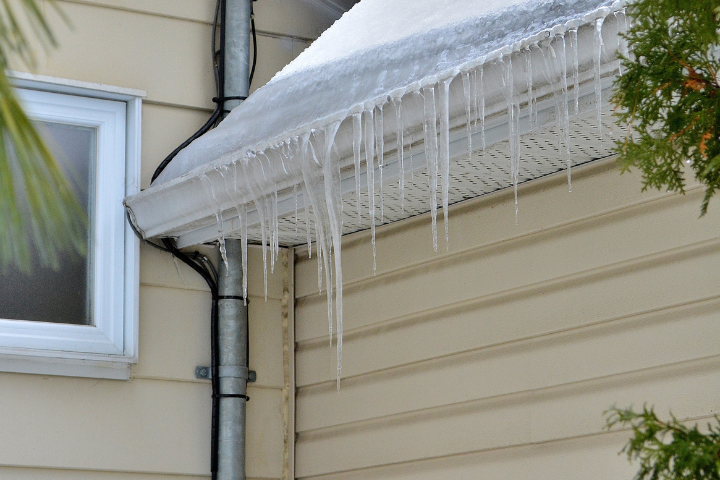
Source: Canva
The main way to prevent ice dams from forming is to keep your roof cold. Seems simple? Well, there are plenty of steps that you’ll need to take in order to make sure this happens. In the immediate, we'd suggest removing all excess snow from your roof, especially if you've noticed water beginning to flood indoor. Consider a snow rake, and use this on your roof following every heavy snowfall. Then, move on to these next steps to reach long-term insulation goals. Do make sure that if you're climbing on your roof, you follow safety procedures.
Prevent heat from exiting your attic
In most homes, an excessive amount of hot air escapes through the attic. This makes for significant heat loss, which will have an impact on indoor temperature beings comfortable. By now you’re also aware that heat travelling to and escaping from the roof of your attic creates ice dams. To curve this from happening, it’s crucial to block any noticeable air leaks in your attic. This includes unblocked walls, gaps present in drywall, cracks around light fixtures or pipes and especially any area on or around your chimney.
In most cases, the places where air is leaking are very well be hidden by insulation. Therefore, this project may require you to pull or rake back insulation and plug the leaks following the use of a water-resistant caulk or foam. Make sure to take this project on during cooler months, as your attic will be unbearably hot in the summertime.
Also worth noting is that insulation should never touch bare skin, and so you should be sure to wear long pants, sleeves, gloves as well as protecting face and lungs from inhaling insulation particles. Tending to leaks is the first step in preventing ice dams.
Measure the amount of insulation in your attic
Since you’re already in the space, we’d suggest measuring the insulation level of your attic. This requires checking the depth of the insulation. If you have less than 8 inches, add more. Also, blown-in cellulose and fibreglass work better than hand-placed batts, so opt for these if you’re having serious ice dam trouble. Installing new insulation takes skill, so do consider hiring a professional if you’re not feeling up to the task.
In summary, to prevent the formation of ice dams on your roof:
Clear snow on your roof to maintain an acceptable temperature gap.
Plug air leaks in your attic (cracks, chimney, wiring, etc.).
Replace or add good quality insulation.
Get 3 renovation quotes for your roofing project
RenoQuotes.com will put you in contact with 3 reliable contractors for your roofing renovation project. Fill in the form on our homepage (it only takes a few minutes), and you will receive quotes from trusted professionals.
Dial 1-844 828-1588 to speak with one of our customer service representatives.
Last modified 2024-01-08
Looking for something else?
Related articles
The latest industry news, interviews, technologies, and resources.
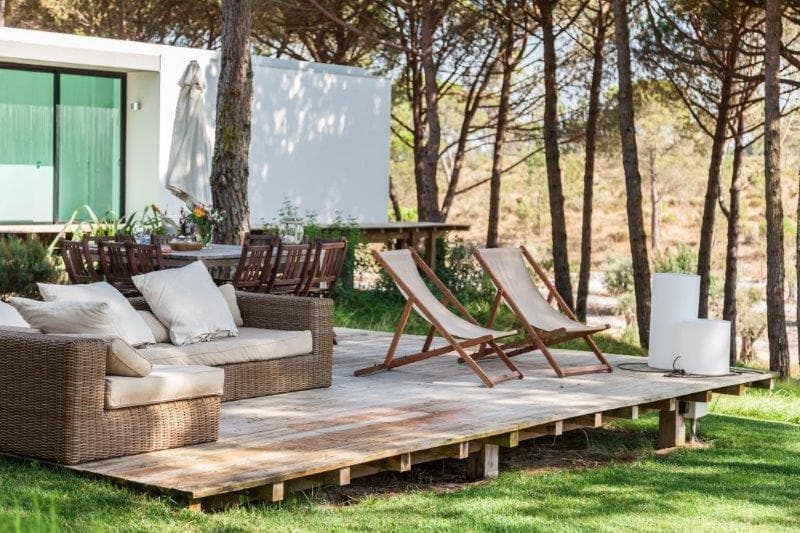
RenoQuotes.com • 07 Nov 2023
Even though we may spend a lot of time indoors, we’re all looking for that connection to the exterior. Building a wood patio is an excellent way to spend some time outside, whether that means entertaining or spend quality time with friends and family. Not only is a wood patio a beautiful spot to enjoy the great outdoors, but it will increase the value of your home overall. If you’re looking to take on this project, you might be wondering what models are available on the market as well as how much this is going to cost.
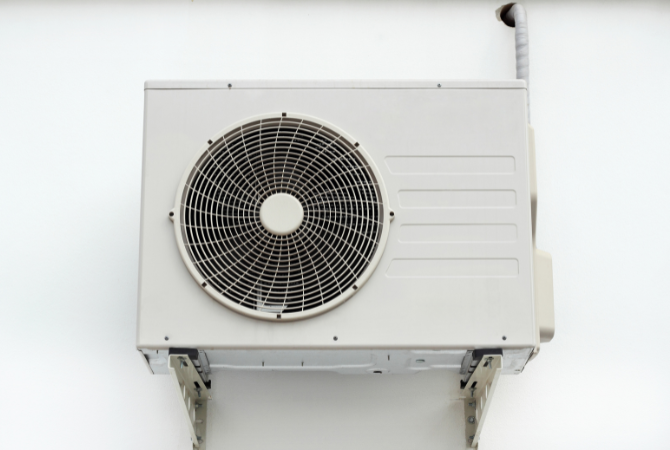
Léa Plourde-Archer • 07 Nov 2023
A heat pump is an important purchase for your home and it often helps solve temperature variation issues indoors. Daikin offers options and features that suit all needs and budgets. We will explore this subject in the following paragraphs.
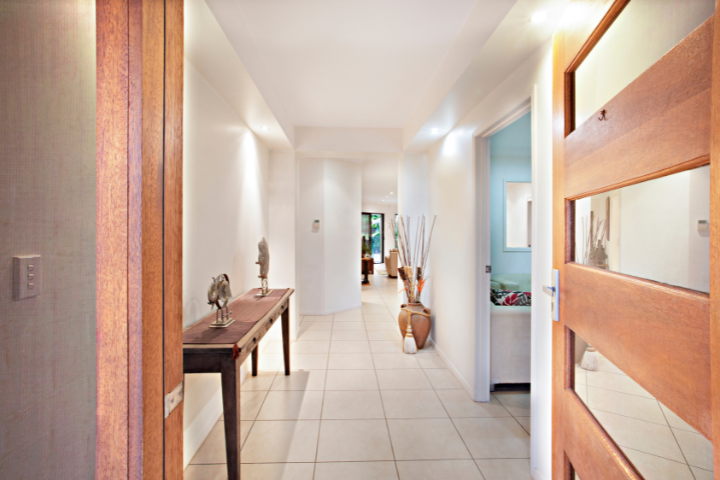
Amanda Harvey • 12 Dec 2023
Walking through the front door of your home should always be exciting. It’s true that after a long day of work or running around, we all hope for a space that’s organized and comfortable.

RenoQuotes.com • 07 Nov 2023
What is more shocking than discovering a problem in our home? This problem may have been present before your purchase, even if it has been a few years since you’ve bought it. You have recourses, it is up to you to proceed!

Léa Plourde-Archer • 07 Nov 2023
Most people dream of having a room, or even a corner of their home dedicated to relaxation and well-being. Everyone has their own idea of what relaxation means, as well as what makes them feel zen. No need to live in a mansion to have your place to get away from it all! RenoQuotes.com has a few tips on how to set up a renovation corner at home.